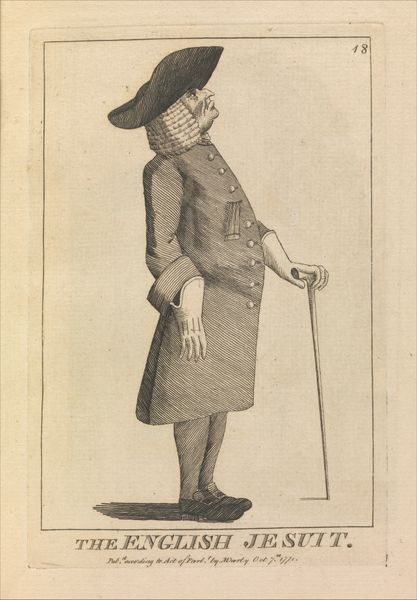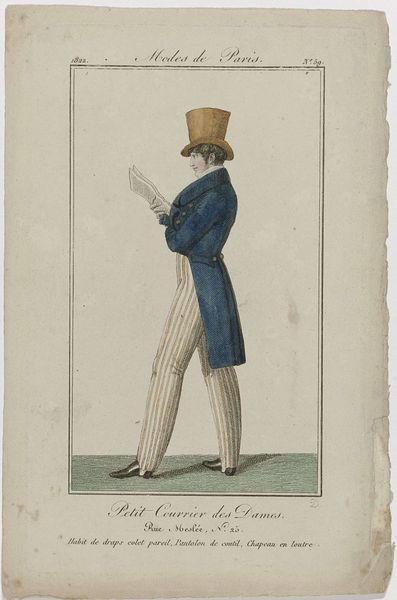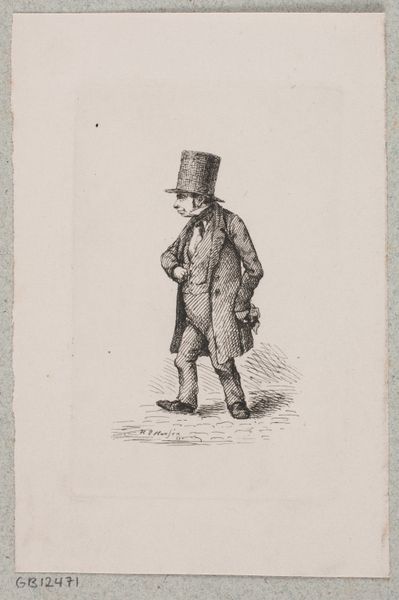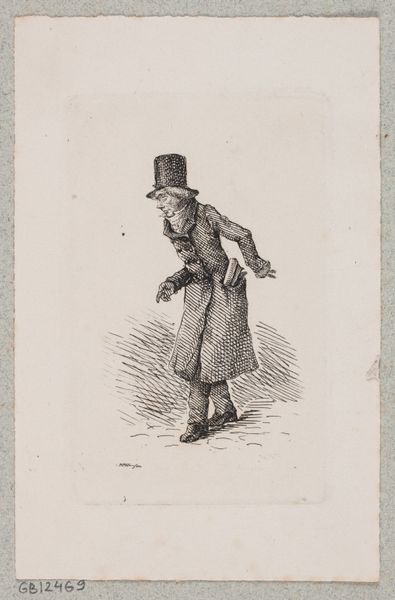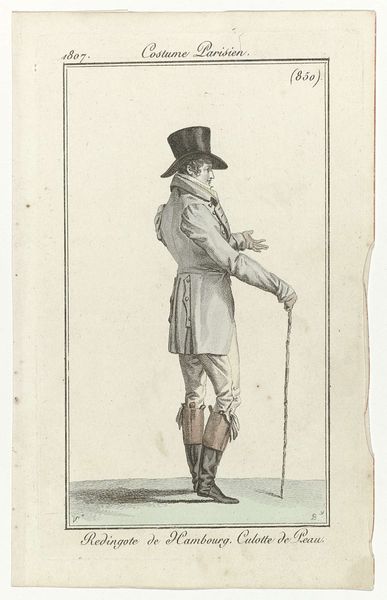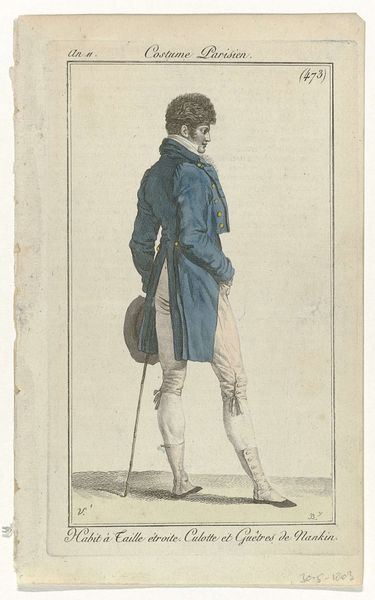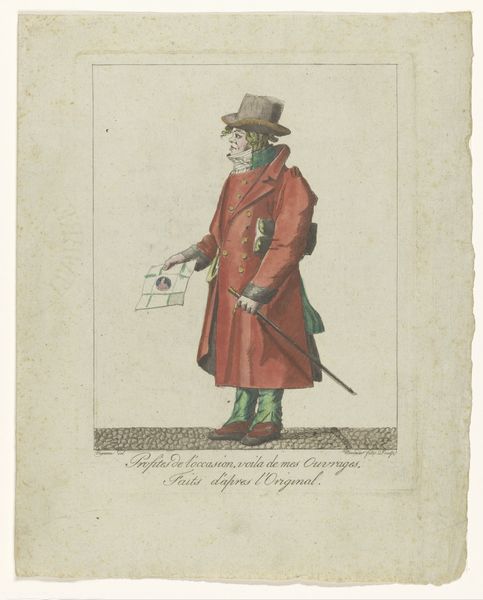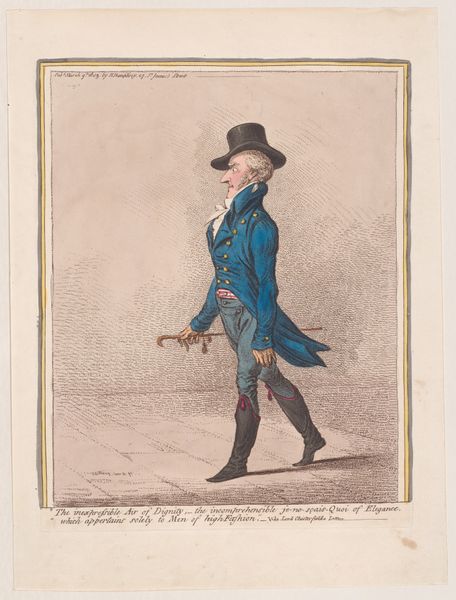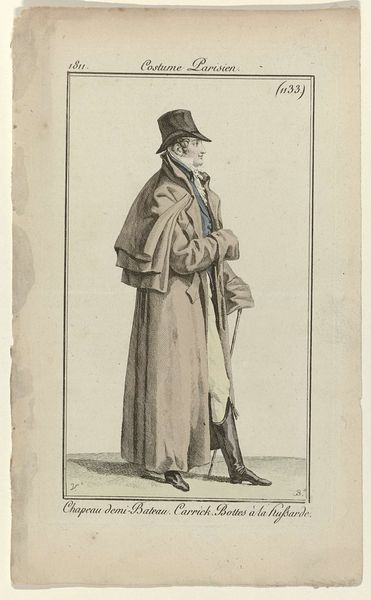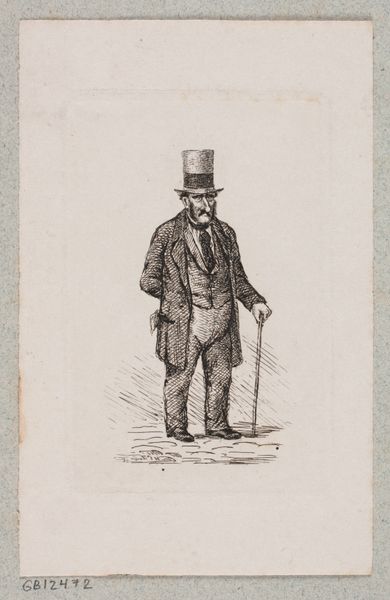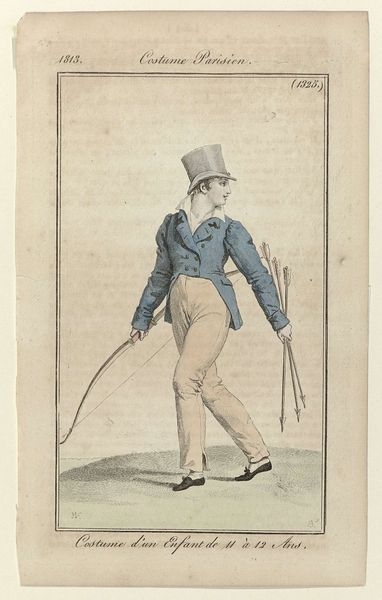
painting, watercolor
#
portrait
#
neoclacissism
#
painting
#
watercolor
#
watercolour illustration
#
genre-painting
Dimensions: height 177 mm, width 112 mm
Copyright: Rijks Museum: Open Domain
Pierre Charles Baquoy created this print of men’s fashion for the Journal des Dames et des Modes. It’s a visual shorthand for understanding the aspirations, status, and social roles of men in French society. Fashion in this period was an expression of social and political identity, with specific styles associated with different classes and political affiliations. The top hat, the cut of the coat, and the fabrics used all spoke volumes about the wearer's position within the social hierarchy. The Journal itself played a crucial role, not just as a mirror, but as a tastemaker in the fashion industry. The institutions that govern taste, like journals, academies, and the patronage system of the court, helped to shape the way art and fashion were produced and consumed. The image, in its detailed portrayal of men’s attire, is a record of the values and norms of the time. Looking closely, we can use primary source materials such as fashion plates, letters, and other archival documents to understand its cultural significance.
Comments
rijksmuseum about 2 years ago
⋮
The Journal des Dames et des Modes occasionally provided coverage of men’s styles. These illustrations give a good picture of trends in mens’ clothing from 1797 to 1825. During the 18th century, gentlemen wore culotte (knee-breeches) 1. These fell out of fashion with the elimination of strict class distinctions during the French Revolution, to be replaced by a type of long trouser(s) known as pantalon à la Hussarde 2. These were worn with hussar boots. ‘Pantaloons’ 3 were trousers pulled tight with an elastic strap under the instep. Carrick 4 coats with a double collar were popular, and in the evenings men wore a special dress cloak 5.
Join the conversation
Join millions of artists and users on Artera today and experience the ultimate creative platform.
